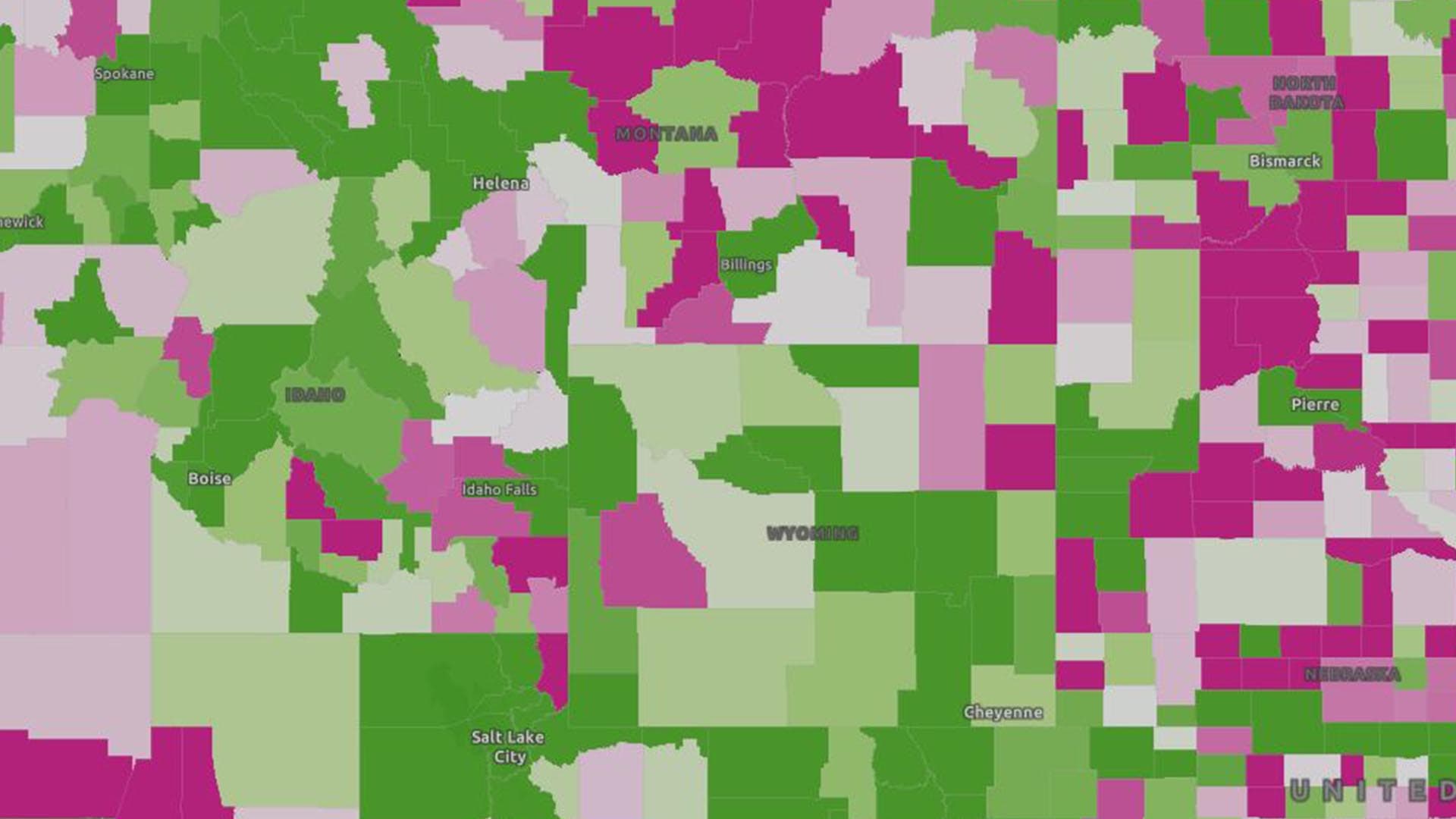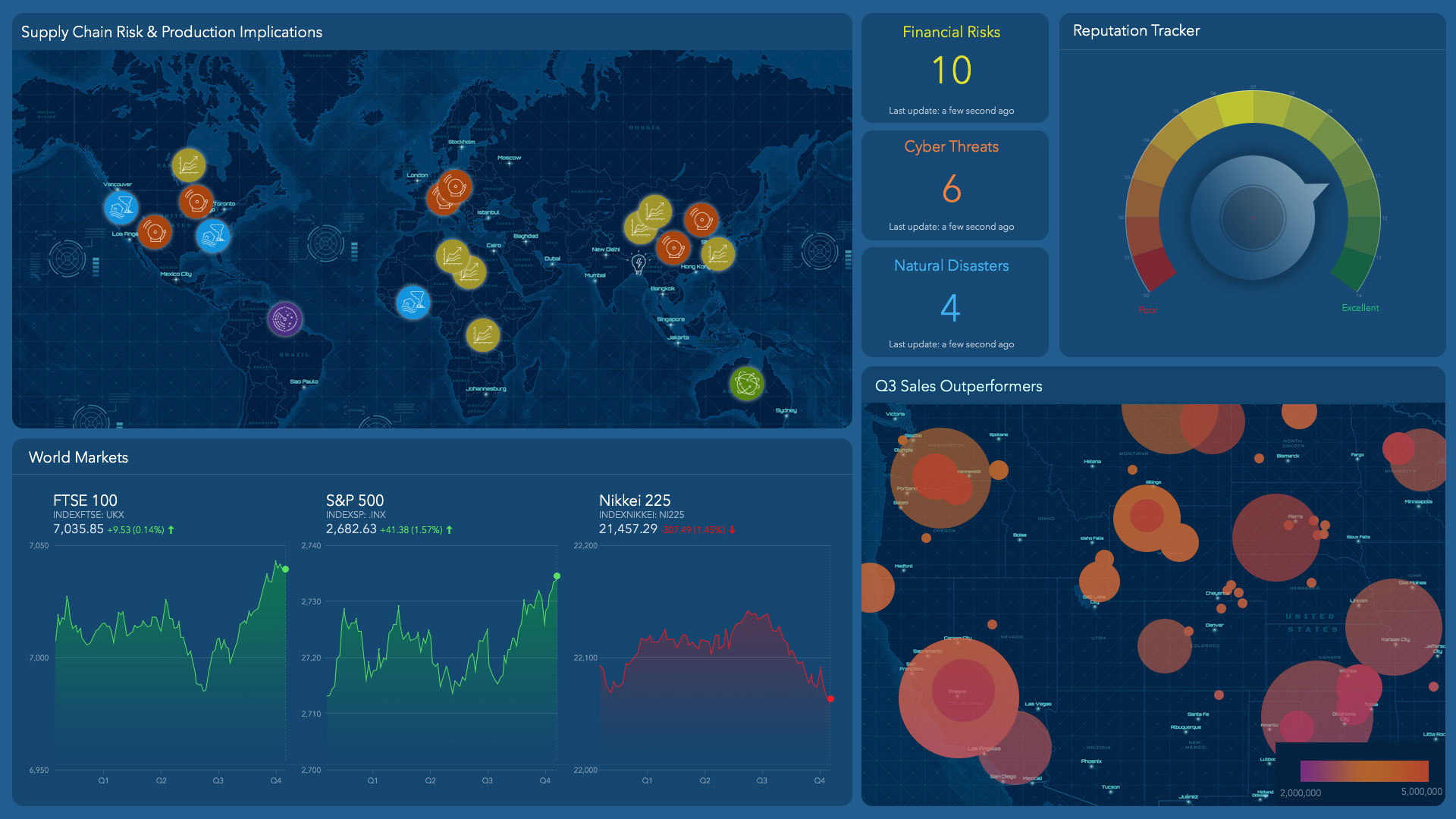Nearly 80 percent of big businesses, and a growing number of small and midsize companies, self-insure their employees’ health coverage. On average, that costs a business more than $13,000 per employee per year.
Most companies have also instituted wellness programs to improve the health of workers and decrease healthcare costs. Unfortunately, many wellness programs are not as effective as they could be because they overlook a key data point: the health implications of where an employee lives.
Research has proven that location carries with it many social, community, and environmental conditions that affect a person’s health—also known as social determinants of health. The impact of these factors reaches far beyond one’s home. It follows us everywhere we go, including into the workplace and the healthcare system.
Experiments in places such as Camden, NJ, have shown a greater than 50 percent reduction in healthcare costs for patients in certain geographies. With that in mind, employers who use location intelligence to analyze social determinants of health can create data-driven wellness programs designed to overcome barriers to good health and potentially cut costs.
While corporate executives routinely use data to drive business decisions, many of those executives are still investing in generic wellness programs designed without employee context.
The US Centers for Disease Control says too few employers are using effective, science-based workplace health programs that address unique challenges faced by employees. A geographic information system (GIS) allows companies to identify social determinants of employee health by creating a wellness map that identifies top inhibitors of a healthy lifestyle based on where employees live. Such technology can also reveal health-promoting resources in those same communities.
Today’s Corporate Healthcare and Wellness Landscape
In 2016, the number of companies that self-insured at least one health plan reached 41 percent, up from 30 percent in 2000. Self-insurance has the potential to offer employers significant financial advantage, but only if they can control costs.
Corporate wellness programs were introduced in the mid-1970s to address employers’ cost concerns by encouraging employees to adopt and maintain healthy behaviors. Johnson & Johnson’s trailblazing Live for Life program began in 1979 and included a questionnaire and physical exam. The company subsequently provided employees customized wellness support including fitness, nutrition, and stress management tips.
Since then, the market for corporate wellness has grown significantly. Ninety-nine percent of firms with 200 or more employees offered at least one wellness program in 2013, according to one study. Of those employers, 69 percent offered gym membership discounts or on-site gyms, 71 percent offered smoking cessation programs, and 58 percent offered weight-loss incentives.
The reasons for such programs are clear. For example, compared to employees of healthy weight, obese workers may incur more than double the cost for healthcare, workers compensation, and short-term disability. That could add up to an additional $4,000 per year, per employee, one study found. Additional health complications such as diabetes, high blood pressure, and high cholesterol drive that number even higher.
The Missing Element: Location
Extensive research has been conducted in recent years proving that a person’s environment directly impacts the ability to live a healthy lifestyle. The world is beginning to take notice, as evidenced by a December 2018 tweet from U.S. Surgeon General Jerome M. Adams:

Ana Lopez-De Fede, Ph.D., research professor and associate director of the Institute for Families in Society at the University of South Carolina, has studied how a person’s place of birth and where they live influence their work environment.
For example, in a single-vehicle household, one family member typically takes that vehicle to work, limiting the rest of the family’s access to resources like grocery stores, workout facilities, and libraries. Those family members miss medical appointments more frequently, and the lack of routine visits ultimately leads to a higher rate of preventable emergency rooms trips and inpatient hospitalizations.
But the single-car phenomenon is just one of many factors that influence employee health. Others include the rate of particulate matter in the air where they live, access to exercise opportunities and healthy foods, and the ratio of local primary care physicians. Plotting these social determinants of health on a GIS-driven map can give employers a better sense of what ails employees—and what drives healthcare costs. That awareness often leads to innovative remedies.
To explore a few of the social determinants of health in your neighborhood, click through this map. (To view each factor on its own, deselect all other factors.)
“Utilizing GIS, an employer can determine the reasons behind high medical costs by understanding context as it relates to employees’ geographic location,” says Lopez-De Fede. “An employer can then determine reasonable costs of healthcare and create contextually relevant wellness programs that improve the quality of life of their employees, while also addressing those high medical costs.”
Academic studies have confirmed Lopez-De Fede’s findings. The National Research Council found that a variety of place-based influences can affect health, including physical circumstances (e.g. altitude, temperature, and pollutants), social context (e.g., social networks, access to care, perception of risk behaviors), and economic conditions (e.g., quality housing and access to health insurance).
Another study found that the increasing epidemic of obesity and chronic disease is likely influenced far more by food and eating environments than by individual factors such as knowledge, skills, and motivation. The finding underscores the importance of making the healthy choice the easy choice, a mantra in the public health community.
Location Viewed as the “Seventh Vital Sign”
Business executives can take a cue from healthcare practitioners such as Lopez-De Fede, who are now examining location-based determinants of health for each patient.
Southern California’s Loma Linda University Health has created personalized “wellness maps” for each of its patients, based on the belief that location is one of a patient’s vital signs.
Loma Linda creates the maps using GIS technology, digitally layering information on top of geographic locations. Each patient can access a personalized GIS wellness map through Loma Linda’s patient portal for electronic health records. On the map, the patient sees her personal health resources (clinics, providers, labs, and pharmacies) as well as community resources such as bus transportation routes, and places to exercise or purchase nutritious food. Each map is updated as the patient’s diagnosis changes. For example, an expectant mother will see a very different map than a patient with diabetes.

For some employees, the opportunities for healthy choices are significantly limited based on where they live, which can ultimately impact the cost of their healthcare.
Utilizing Location Intelligence to Improve Wellness in the Workplace
Self-insured businesses are already driving healthcare innovation in the workplace by offering new care models like telemedicine and on-site clinics. The next step will be using GIS-based location intelligence to develop more effective health and wellness programs.
Dr. Lopez-De Fede says employers should begin by asking themselves questions related to their employees’ unique health challenges and associated costs, such as, Where do my employees live? What’s going on outside of the office?
GIS helps employers answer these questions by analyzing health-related information in the context of location. Data is gathered at a group level to protect employee privacy, and its analysis can help employers find solutions to health barriers. For instance, if employees aren’t picking up prescriptions or are missing doctor appointments, an employer could create an in-network pharmacy closer to the office and create flex time for appointments.
Once employers have used location intelligence to identify employee barriers to health, they can create more effective wellness programs that address location-based challenges faced by employees. Examples include:
- Develop key partnerships in employees’ communities to improve access to and awareness of wellness resources such as pharmacies, fitness clubs, grocery stores, and transportation resources. (The North Carolina Institute of Public Health in partnership with the Carolinas HealthCare System is doing this for its patients, using GIS.)
- Add to the insurance network pharmacies and health clinics in underserved neighborhoods
- Allow employees to have groceries delivered to the office and provide them a place to store them
- Provide free exercise classes in the workplace, and hold a 5K walk/run in underserved communities
- Decrease stress associated with long commutes by offering shared transportation options (e.g., vans, carpools)
- Create a teacher mentorship program to transfer best practices from healthy communities to less-healthy communities
- Offer an app that lets employees and their families build an exercise routine based on nearby green spaces, bus routes, gyms, bike shares, sunrise/sunset times, and more
- Create personalized wellness maps that show employees resources in their communities
Wellness programs are often designed with the best intentions and the hope that they balance good health with good economics. But in the age of data-driven decisions, employers can use more than hope to drive results. Innovative, self-insuring companies are now using location intelligence to help promote employee health, reduce costs, and improve productivity.
The Esri Brief
Trending insights from WhereNext and other leading publicationsTrending articles

December 5, 2024 |

July 25, 2023 |

November 12, 2018 |

April 1, 2025 |

February 1, 2022 |

April 29, 2025 |





